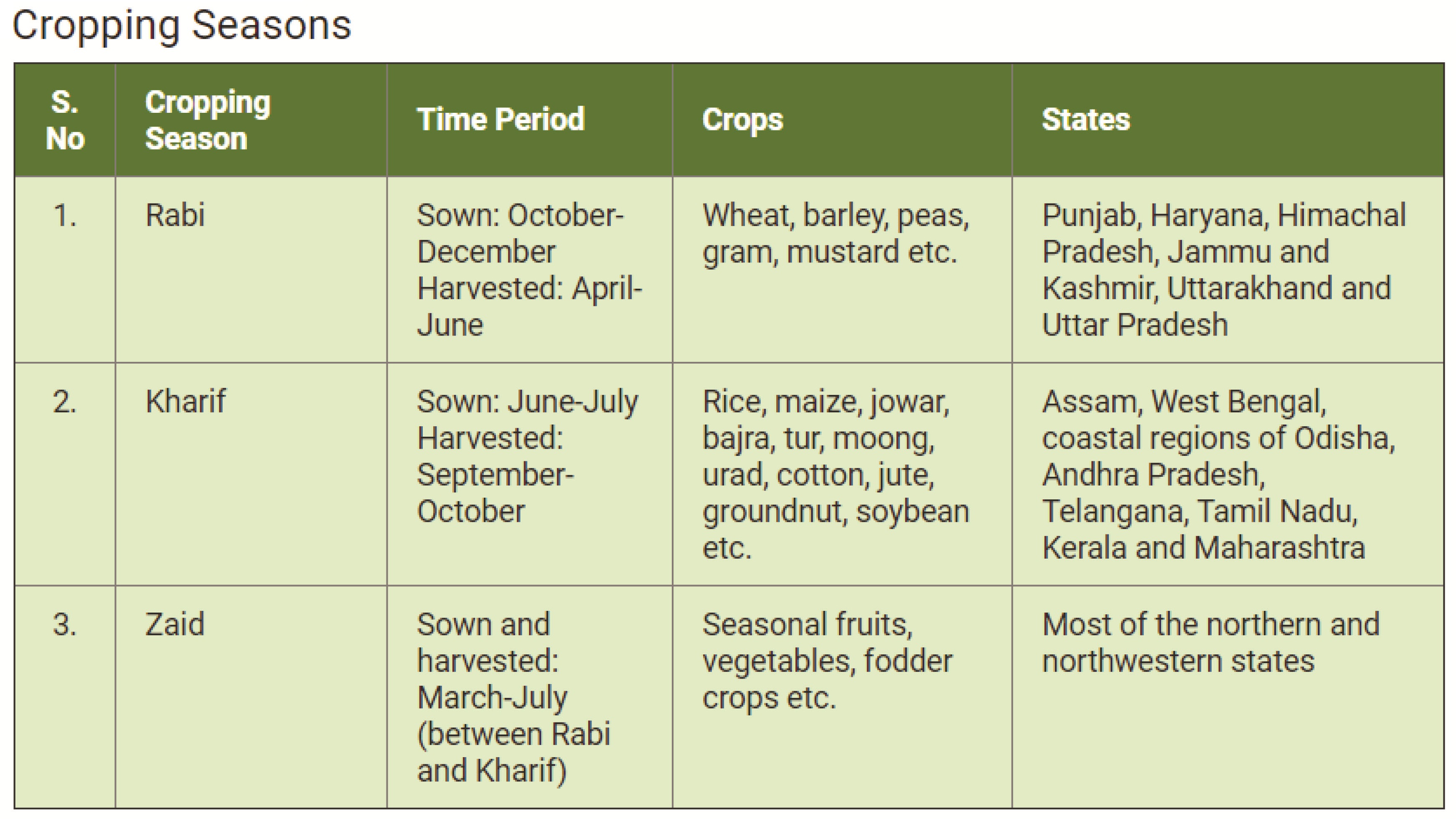Year End Review 2019: Ministry of Agriculture & Farmers Welfare | 01 May 2020
Important Schemes and Policies
Pradhan Mantri Kisan Maan Dhan Yojana (PM-KMY)
- Launched in September 2019, the central sector scheme aims to provide the social security net for the Small and Marginal Farmers (who own cultivable land up to 2 hectares).
- It provides for payment of minimum pension of Rs.3000/- per month to the eligible small and marginal farmers on attaining the age of 60 years.
- It is a voluntary and contributory pension scheme, with entry age of 18 to 40 years.
- The monthly contribution by farmer ranges between Rs.55 to 200.
- Central Government will contribute an equal amount in the pension scheme.
- The Life Insurance Corporation of India (LIC) is the Pension Fund Manager for the Scheme.
- On exit from the scheme, the beneficiary will receive his/her accumulated share and the Government’s contribution will be deposited in the LIC Fund.
- After the subscriber’s death, the spouse or heir shall be entitled to receive 50% of the pension as family pension, provided he/she is not already an SMF beneficiary of the Scheme.
- On the death of the subscriber during the period of contribution, the spouse shall have the option of continuing the Scheme by paying regular contribution.
Pradhan Mantri Kisan Samman Nidhi (PM-KISAN)
- Launched in February 2019, the central sector scheme, provides for transfer of an amount of Rs. 6000/- per year in three equal instalments each of Rs. 2000/- directly into the bank account of beneficiary farmer families.
- The Scheme initially covered only small and marginal farmer families as beneficiaries, subject to certain exclusion criteria for higher-income status. The Government later extended the scheme to all farmer families irrespective of landholding size.
- The entire responsibility of identification of beneficiary farmer families rests with the State/UT Governments.
Increased MSP for Kharif and Rabi Crops- 2019-2020
- The Union Government increased the Minimum Support Price (MSP) for Kharif and Rabi 2019-20 seasons.
- The MSP is the rate at which the government buys grains from farmers.
- Reason behind the idea of MSP is to counter price volatility of agricultural commodities due to the factors like variation in their supply, lack of market integration and information asymmetry.
- The MSP is fixed on the recommendations of the Commission for Agricultural Costs and Prices (CACP).
- Factors taken into consideration for fixing MSP include:
- Demand and supply;
- Cost of production (A2 + FL method)
- Price trends in the market, both domestic and international;
- Inter-crop price parity;
- Terms of trade between agriculture and non-agriculture;
- A minimum of 50% as the margin over cost of production; and
- Likely implications of MSP on consumers of that product.
Commission for Agricultural Costs and Prices (CACP)
- The CACP is an attached office of the Ministry of Agriculture and Farmers Welfare, formed in 1965. It is a statutory body that submits separate reports recommending prices for Kharif and Rabi seasons.
National Commission on Farmers: Swaminathan Committee
- On 18th November, 2004, the Union government formed the National Commission on Farmers (NCF) with MS Swaminathan as its chairman.
- The main aim of the committee was to come up with a sustainable farming system, make farm commodities cost-competitive and more profitable.
- It, in 2006, recommended that MSPs must be at least 50% more than the cost of production.
- It talked about the cost of farming at three levels:
- A2: All the types of cash expenditure to generate the crop like seeds, manure, chemicals, labour costs, fuel costs and irrigation costs.
- A2+FL: It includes A2 plus an imputed value of unpaid family labour.
- C2: Under C2, the estimated land rent and the cost of interest on the money taken for farming are added to A2 and FL.
Read TTP on Cropping Patterns in India-I
Read TTP on Cropping Patterns in India-II
- 421 new mandis have been approved for integration under the e-NAM. Along with these, FPOs have also been on-boarded on e-NAM portal and they have started uploading their produce for trading from their premise.
- e-NAM was launched on 14th April 2016 as a pan-India electronic trade portal linking Agricultural Produce Market Committees (APMCs) across the States.
- It is an electronic national agriculture market (eNAM) to connect all regulated wholesale produce markets through a pan-India trading portal.
- It provides for contactless remote bidding and mobile-based anytime payment for which traders do not need to either visit mandis or banks for the same.
Seed-Hub Centres
- 25 Seed-Hub Centres have been sanctioned across the country for increasing availability of quality seeds of Nutri-Cereals (Millets).
- In 2018-19, the Government of India launched a National Millet Mission which included renaming millets as “Nutri-cereals”.
- Millet is a collective term referring to a number of small-seeded annual grasses that are cultivated as grain crops, primarily on marginal lands in dry areas in temperate, subtropical and tropical regions.
- Some of the common millets available in India are Ragi (Finger millet), Jowar (Sorghum), Sama (Little millet), Bajra (Pearl millet), and Variga (Proso millet).
- Millets are cultivated in low-fertile land, mountainous, tribal and rain-fed areas. These areas include Andhra Pradesh, Chhattisgarh, Gujarat, Haryana, Madhya Pradesh, Rajasthan, Maharashtra, Karnataka, Uttar Pradesh, Tamil Nadu, and Telangana.
- Millets also are known as ‘nutri-cereals’ and have a high protein content, short growing season, climate change resilience and low water requirement.
- India's proposal to observe an International Year of Millets in 2023 has been approved at the by the Food and Agriculture Organisation (FAO).
- India celebrated 2018 as the national year of millets.

